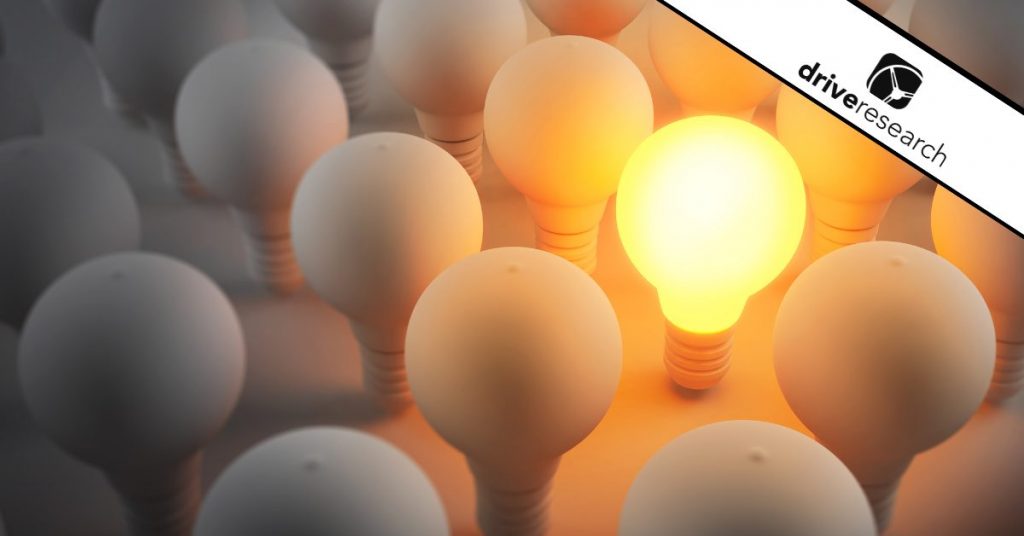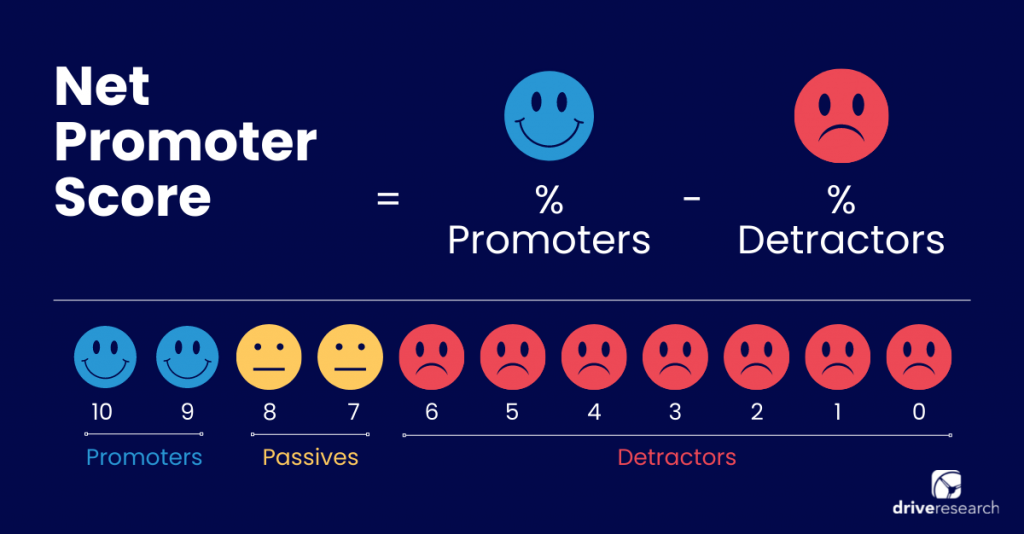
One of the most common and sought-after metrics in market research is unaided and aided awareness.
Whether it is awareness of a product, awareness of a brand, or awareness of advertising, businesses spend an exorbitant amount of money on understanding customers’ familiarity.
This is because in a consumer’s path to purchase, awareness is the first step of an often long decision-making process. If customers are not at least semi-familiar with your product or service, they obviously cannot buy it.
We often measure both unaided and aided awareness for our clients because each metric tells a different story.
- Aided awareness. The percentage of respondents who are aware of your product, brand, or advertising when asked.
- Unaided awareness. The percentage of respondents who are aware of your product, brand, or advertising top-of-mind without being assisted.
Let’s dive more into these key performance indicators and how our online survey company measures them both.
How to Measure Awareness
Collecting awareness statistics will help a business make more strategic decisions.
Surveys can help address the percentage of your customers and prospects who use a variety of marketing channels. In addition, surveys can also help your business source which channels customers to become aware of your brand.
For example, if a customer is aware of your brand, you can follow up with a question around which of the following sources did you see/hear information about our company?
Also, your survey can answer what percent watch television, listen to the radio, use Facebook, use Twitter, use online search, etc.
Knowing what percent use each of these channels can help you better spend your marketing dollars in the areas where your customers spend their time.
A simple image and awareness survey completed online can help you address some of these factors and more. This is also often called a brand equity study.
The process includes a proposal, kickoff meeting, workplan, survey draft, programming, fieldwork, analysis, and reporting. The end-to-end process is managed by the market research firm.
How do you calculate total awareness?
Unaided and aided awareness calculated together will provide a business with a total awareness figure.
If 63% of respondents are aware of Nike unaided, and another 31% are aware of Nike aided, the total awareness of Nike is calculated to be 94%.
What is Unaided Awareness?
When navigating aided and unaided awareness in market research, it’s key to understand that both methods have their own differences.
Unaided awareness is the percentage of respondents aware of your product, brand, or advertising top-of-mind without being assisted.
In a survey, respondents might be asked: “What brands of athletic shoes come to mind?”
Respondents will state Nike, Adidas, or other brands open-ended without being aided. The aggregate number of respondents mentioning each brand would be your calculated unaided awareness figure.
Unaided Awareness Example Question
Q: When you think about [insert industry], what brands come to mind first? List up to 5.
- [Text box #1]
- [Text box #2]
- [Text box #3]
- [Text box #4]
- [Text box #5]
The wording of this question will vary based on the organization and goals of the research. Some brands may want to focus on competitors within a specific geography. Other brands may have fewer competitors and only request participants to list the first brand that comes to mind.
When analyzing the results of this question, it’s important to also analyze the order in which brands were named.
A market research company, like Drive Research, may choose to combine answers to this question together to break down the results, but they will also take a look at trends on which brands were named before others.
For example, suppose 80% of participants were aware of Example Company A and 79% were aware of Example Company B.
A deeper level of meaning is added to the data knowing Example Company B was typically named first by respondents, while Example Company A was typically listed third.
What is Aided Awareness?
Aided brand awareness is the percentage of respondents aware of your product, brand, or advertising when asked.
In a survey, respondents might be asked: “Are you aware of Nike athletic shoes?”
Respondents will state yes or no to clarify their aided awareness of each brand. Aided awareness questions are only asked if the respondent fails to mention the brand unaided.
The aggregate number of respondents mentioning each brand would be your calculated aided awareness figure.
Aided Awareness Example Question
Q: Which of the following organizations are you aware of? Select all that apply.
- Example Company 1
- Example Company 2
- Example Company 3
- Example Company 4
- Example Company 5
- None of the above
The question above measures aided awareness because participants are given a list of organizations rather than asking participants to recall brands from memory.
It’s important to note the order the answer options/organizations should be randomized. This prevents sequence bias, which leads to participants selecting the top answer first simply because it’s listed first.
Which is Better – Aided or Unaided Awareness Questions?
Now that you know a little more about aided and unaided awareness in market research, you may be wondering which is better for your project.
If deciding to measure aided versus unaided awareness, brands may want to consider asking both. Remember, however, it’s important to ask for unaided awareness before aided awareness.
If measuring both, brands will also want to consider making the list of organizations in the aided awareness question limited to key competitors. It’s easy for participants to get overwhelmed, particularly if they already named one of the brands listed in the unaided question.
This type of error is something that can be corrected through the data cleaning process, but it’s always important to make sure it’s as easy as possible for participants to fully complete the survey.
It’s also important to note measuring aided and unaided awareness is not limited to surveys. These questions can be easily adapted to qualitative research like in-depth interviews and focus groups.
Through conversation, the moderator can ask what brands come to mind first. After this, the moderator can inquire about key competitors.
Other Metrics to Measure with Awareness
Before we get going on brand equity surveys, consider this statistic: it only takes 0.05 seconds for a potential customer to create an opinion about a brand.
This is exactly why it’s so important to know how branding and awareness can affect a business.
With that in mind, we wanted to take a little time to explain to you just how a brand equity study relates to awareness. As we mentioned earlier, this can also be referred to as an image and awareness survey.
In order to truly understand awareness of a brand, a target audience of consumers need to be surveyed. After all, what’s the point of understanding awareness if you have no idea how it relates to your audience?
A brand equity study will let you know how customers view your business, or if they are even aware of you in the first place.
This is far more than measuring customer satisfaction. Brand equity surveys are all about what drives the potential customer (excuse the pun). Do they have positive or negative thoughts about your brand? What other opinions do they have about your company?
While asking aided or unaided awareness questions are key in these surveys, there are other topics to consider covering.
We’ve listed some other important factors to cover:
- Word association
- Perception
- Likelihood to recommend/consider
- Brand loyalty
Word Association
It’s just like it sounds. Respondents are asked what they think when they see or hear a brand name. In fact, try this out with yourself.
Monitor your first thought when you think of or see a few brands. Do you like them? Hate them? Are they “scandalous?” Bam–you just did word association.
Perception
Perception tackles the overall consumer opinion of a company. Often, they’re asked to rate said perception as positive, neutral, or negative.
Questions based on perception are actually a great way to see what goes into positive or negative online reviews. What’s more, they can help you get to the bottom of negative ones.
Likelihood to Recommend/Consider
Again, these ones are pretty self-explanatory! Likelihood to recommend is a net promoter score (NPS) metric that weighs if others would be willing to recommend your brand based on their opinion of it.
Likelihood to consider weighs if someone will make the leap to purchase from a brand.

Brand Loyalty
Who are your ride-or-dies? This metric will help you determine which customers are loyal and which ones may be considering jumping ship.
Shh! The Sponsor of the Study Should be a Secret.
One thing is for sure – brand awareness research must be conducted strategically in a way where participants are not privy to who the sponsor of the study is.
For this reason, when measuring brand awareness, the market research study should be blinded or results will be skewed before a respondent’s feedback is even collected.
Think of it like this. A random sample of people is asked to participate in a survey about Frank’s Tire Shop.
The first question of the survey asks, “How aware are you of Frank’s Tire Shop?”
Respondents are more likely to answer with a higher rating for awareness because they were just made aware of Frank’s Tire Shop – even if they had never heard of this store before.
Measure Your Brand Awareness with Drive Research
Aided and unaided awareness in market research provides incredibly useful information for brands. With the information gathered, awareness research can provide businesses with key data that will improve their brand.
Drive Research is a market research company. We specialize in a number of custom-built survey projects. Thinking about conducting an image and awareness survey by telephone or online? Get a quote today.



